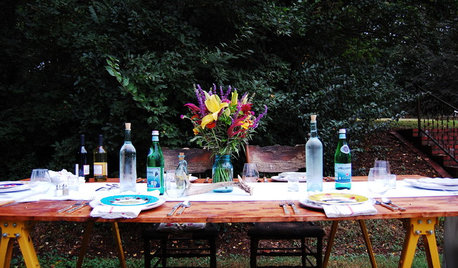Leafs curling on Montmorency Cherry Trees
stemy
14 years ago
Related Stories

EDIBLE GARDENSHow to Grow Your Own Luscious Cherries
Nope, they’re not the easiest fruit to grow. But with spectacular blossoms and pies as possibilities, cherries are sure worth a try
Full Story
EDIBLE GARDENSGrow Plum Hybrids for Your Favorite Fruit Flavors
Plums are cozying up with apricots, peaches and even cherries — here’s how to grow these hybrids for the best aspects of each
Full Story
LANDSCAPE DESIGN7 Great Trees for Summer Shade and Fall Color
These landscape-pro faves straddle the seasons beautifully. Could one enhance your own yard?
Full Story
TREES11 Japanese Maples for Breathtaking Color and Form
With such a wide range to choose from, there’s a beautiful Japanese maple to suit almost any setting
Full Story
EDIBLE GARDENSSummer Crops: How to Grow Tomatoes
Plant tomato seedlings in spring for one of the best tastes of summer, fresh from your backyard
Full Story
FARM YOUR YARDHow to Grow Vegetables in Containers
Get glorious vegetables and fruits on your patio with a pro’s guidance — including his personal recipe for potting mix
Full Story
KITCHEN DESIGNWonderful Wood Countertops for Kitchen and Bath
Yes, you can enjoy beautifully warm wood counters near water sans worry (almost), with the right type of wood and sealer
Full Story
WINTER GARDENING6 Reasons I’m Not Looking Forward to Spring
Not kicking up your heels anticipating rushes of spring color and garden catalogs? You’re not alone
Full Story
MOST POPULAR20 Ideas for Easygoing Summer Parties
Ditch the fancy and fussy in favor of laid-back entertaining that leaves you more time to enjoy the fun
Full Story
DECORATING GUIDESReboot Your Child’s Room for Back-to-School Time
Give a preschooler to teen a room that’s more age appropriate, fun or to their taste
Full Story





jellyman
stemyOriginal Author
Related Professionals
Clark Landscape Architects & Landscape Designers · Glassmanor Landscape Architects & Landscape Designers · Simi Valley Landscape Architects & Landscape Designers · White Oak Landscape Architects & Landscape Designers · Anderson Landscape Contractors · Aloha Landscape Contractors · Del Aire Landscape Contractors · Fort Atkinson Landscape Contractors · Rockwall Landscape Contractors · Tuscaloosa Landscape Contractors · Waterford Landscape Contractors · Webster Groves Landscape Contractors · West Palm Beach Landscape Contractors · 07920 Landscape Contractors · Shenandoah Landscape Contractorsjellyman
lifespeed
stemyOriginal Author
jellyman
lifespeed
Beeone
angelica_9
olpea